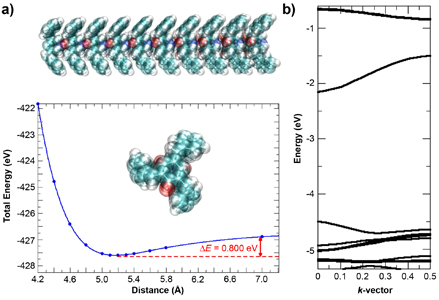
We present an unconventional approach to the development of 1-D supramolecular wires based on the self-assembly of donor-σ-acceptor molecules. The concept is demonstrated using one class of these systems, 1-aza-adamantanetriones (AATs), that are well-characterized in terms of their solution/solid-state self-assembly and chemical manipulation. Our results show that accompanying spontaneous organization of the molecules into 1-D periodic arrays is delocalization of the frontier molecular orbitals through the saturated tricyclic cores of the monomers that span the entire system. The electronic band structure for the 1-D wire reveals significant dispersion and can be tuned from the insulating regime to the semiconducting regime by suitable chemical functionalization of the core. The theoretical understanding of this new class of supramolecular structures sets the stage for the tailored design of novel functional materials that are an alternative to those comprised of traditional pi-conjugated systems.
